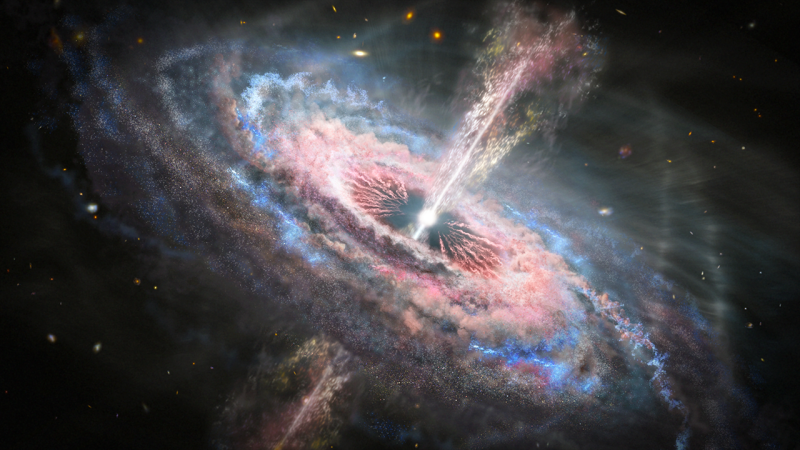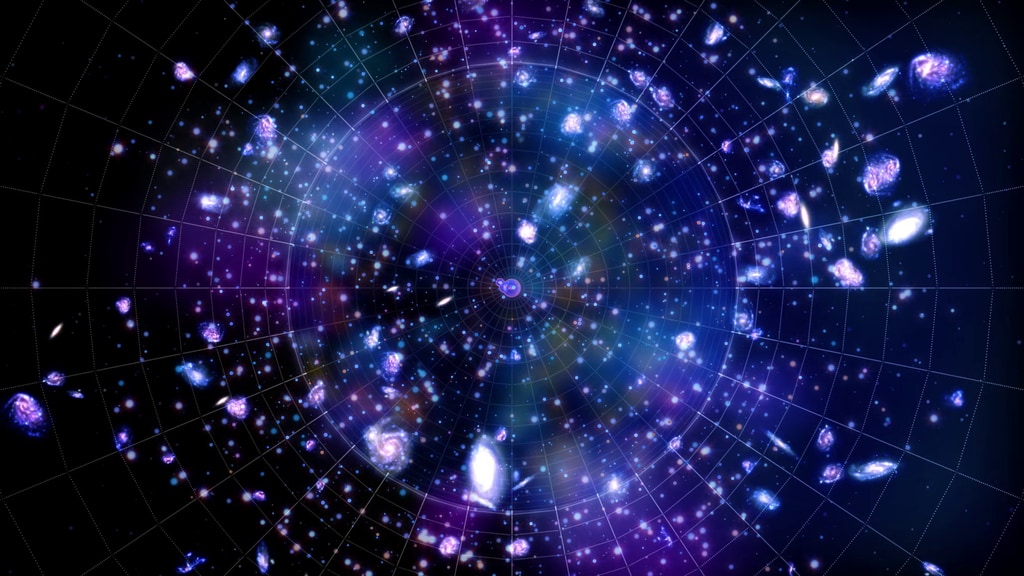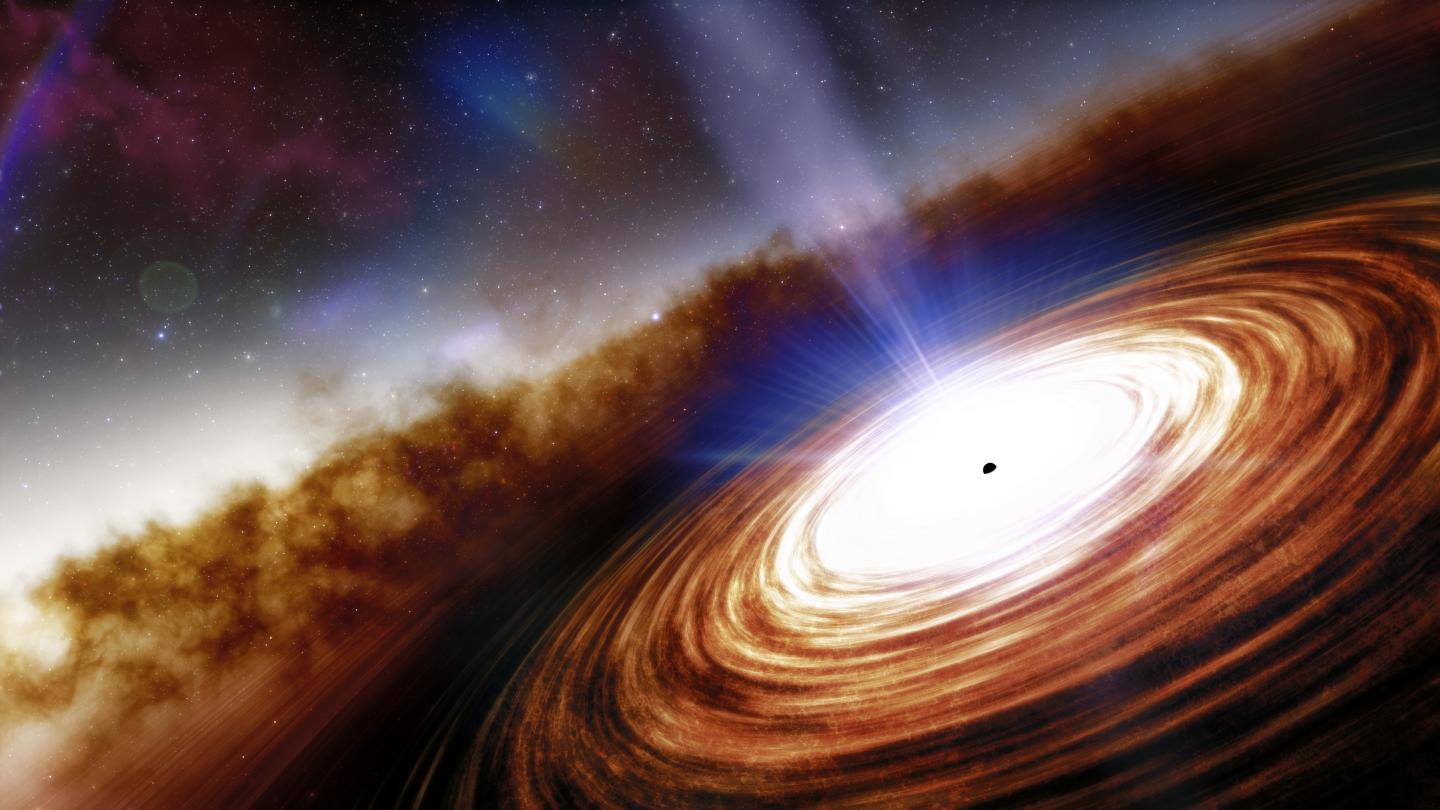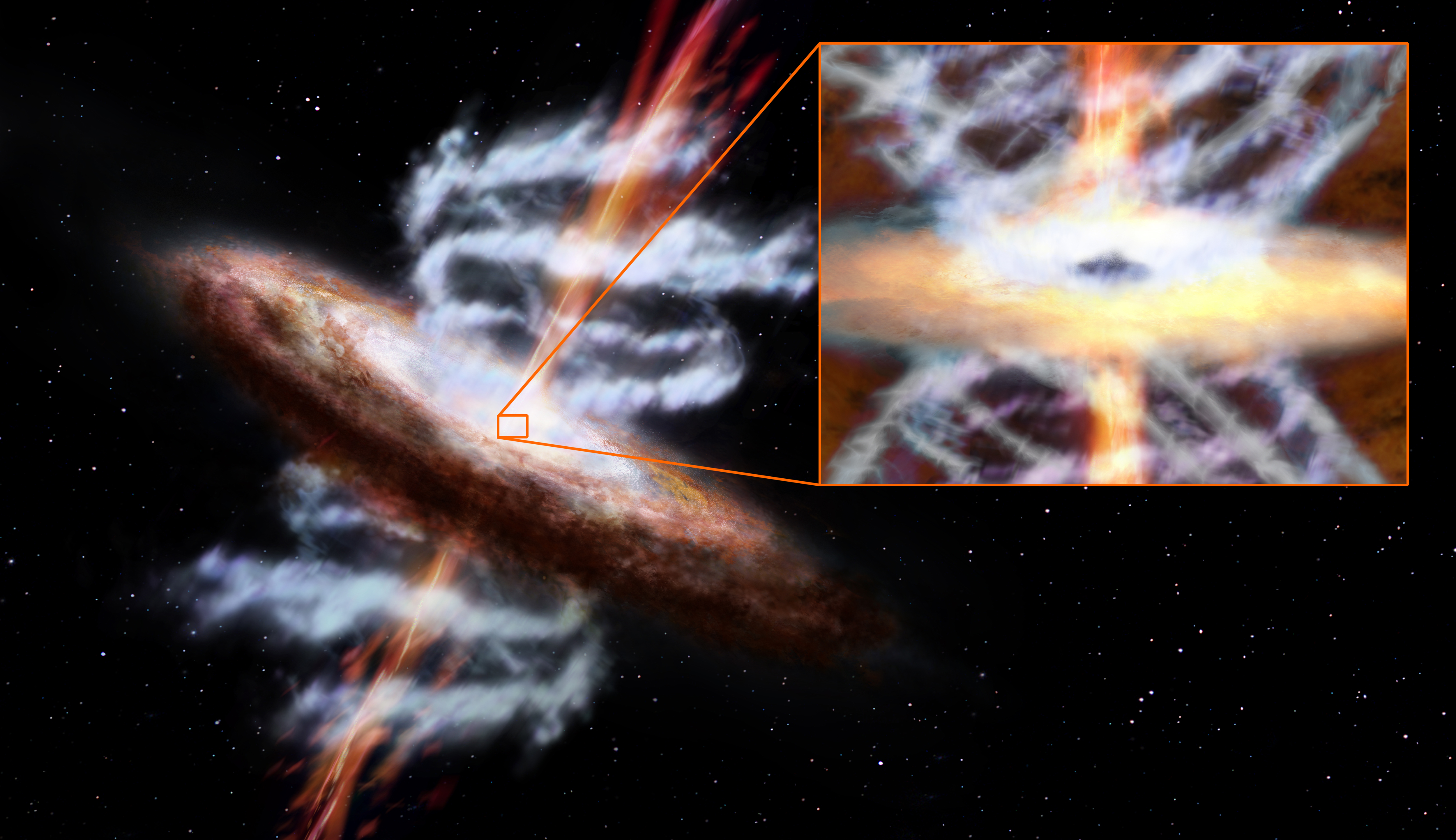James Webb Space Telescope will study super-bright quasars to understand early universe
Quasars shine so brightly that they eclipse the galaxies in which the objects are embedded.

Some of the James Webb Space Telescope's first science investigations will probe the role that bright objects called quasars played in early galaxy evolution.
Quasars are distant objects powered by black holes typically a billion times as massive as our sun. They emit energies that can climb to trillions of electron volts, exceeding the total output of all the stars in a typical galaxy.
Scientists, Webb officials said in a 2021 statement, "will examine what part quasars play in galaxy evolution during these early times. The team will also use the quasars to study the gas in the space between galaxies in the infant universe."
Webb's perch in deep space, coupled with its extreme sensitivity to low levels of light and high resolution, will make the most detailed set of observations yet possible of these elusive objects, which have only been known to science for about half a century.
Live updates: NASA's James Webb Space Telescope mission
Related: How the James Webb Space Telescope works in pictures
Once Webb finishes its commissioning period this summer, the telescope will be tasked with several quasar programs. For example, Webb will look at six of the most distant and luminous quasars to situate these objects in the timeline of galactic evolution. Quasars will also be used to look at gas distribution between galaxies.
Scientists are interested in learning more about a period known as the epoch of reionization. This epoch happened 13 billion years ago, or less than a billion years after the universe was formed. Galaxies of the era were largely opaque to energetic light and those objects are thus difficult to observe.
Breaking space news, the latest updates on rocket launches, skywatching events and more!
"The team will use quasars as background light sources to study the gas between us and the quasar," Webb officials stated of the telescope's technique of probing the opaque zones. "That gas absorbs the quasar's light at specific wavelengths. Through a technique called imaging spectroscopy, they will look for absorption lines in the intervening gas."
Webb's ability to observe in infrared light will also be a boon for observations of this period, team members said. It will especially be useful because the most distant quasars' light were severely stretched by expansion of space. This phenomenon, known as cosmological redshift, moves light waves to the red or infrared area of the spectrum, where Webb is optimized to make observations.
It is hoped that Webb will see enough light from the quasars to look for elements heavier than hydrogen or helium, elements that are called "metals" by astronomers. "These elements were formed in the first stars and the first galaxies and expelled by outflows," Webb officials said.
Outflows are another item on Webb's agenda, to better understand how gas accreted by a supermassive black hole embedded in a galaxy pushes and heats up surrounding gas. The outflows can become so strong that they create chaos in the host galaxy and greatly affect the galaxy's evolution.
"We want to observe these quasars at the moment when they’re having the largest impact on their host galaxies," Chris Willott, the Canadian Space Agency's Webb project scientist, said in the same statement. Willott is also a research scientist at the Herzberg Astronomy and Astrophysics Research Centre of the National Research Council of Canada in British Columbia.
So far, scientists known that gas removed from a galaxy will slow the rate of star formation, since stars depend on gas to form and grow. In some cases, outflows will rob the galaxy of so much gas that star formation will cease completely.
"Scientists also think that outflows are the main mechanism by which gas, dust and elements are redistributed over large distances within the galaxy, or can even be expelled into the space between galaxies — the intergalactic medium. This [process] may provoke fundamental changes in the properties of both the host galaxy and the intergalactic medium," Webb officials said.
A full list of quasar investigations and principal investigators is available on the Webb guaranteed observations page for Cycle 1, under "High-redshift Quasars and Galaxy Assembly."
Follow Elizabeth Howell on Twitter @howellspace. Follow us on Twitter @Spacedotcom and on Facebook.

Elizabeth Howell (she/her), Ph.D., was a staff writer in the spaceflight channel between 2022 and 2024 specializing in Canadian space news. She was contributing writer for Space.com for 10 years from 2012 to 2024. Elizabeth's reporting includes multiple exclusives with the White House, leading world coverage about a lost-and-found space tomato on the International Space Station, witnessing five human spaceflight launches on two continents, flying parabolic, working inside a spacesuit, and participating in a simulated Mars mission. Her latest book, "Why Am I Taller?" (ECW Press, 2022) is co-written with astronaut Dave Williams.



